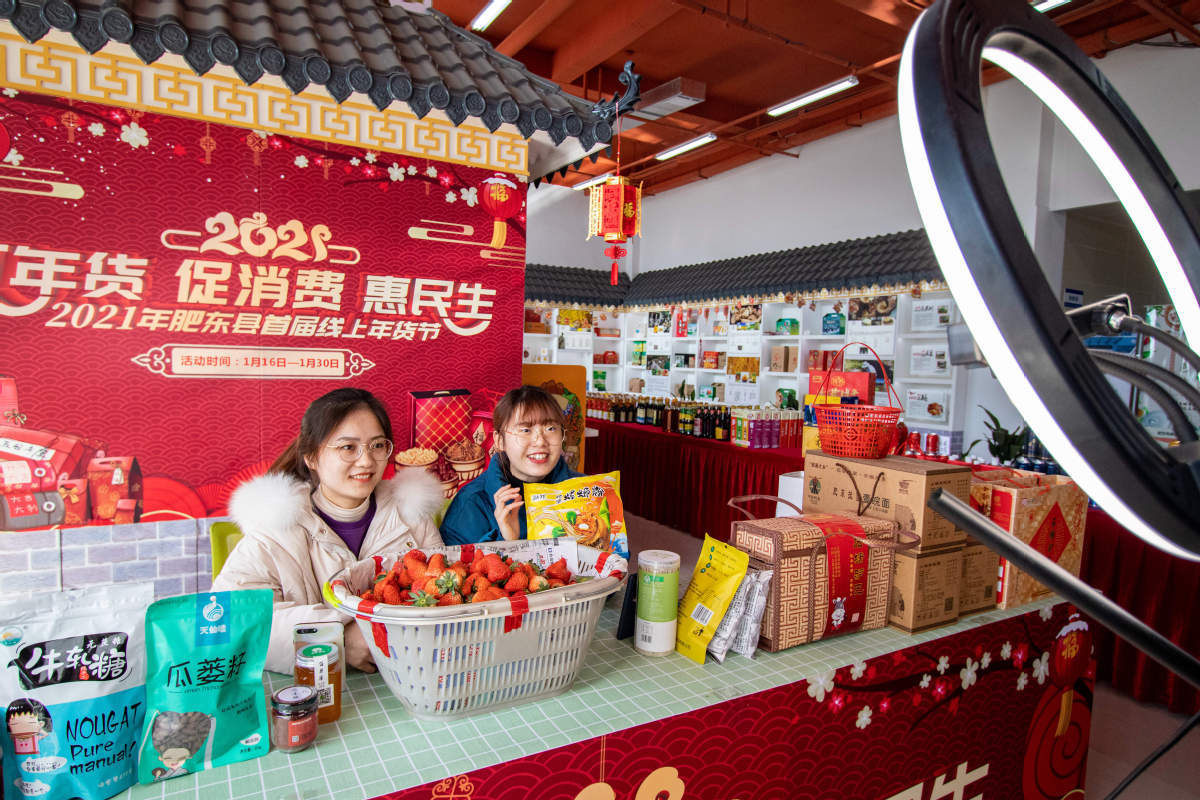Insights and lessons for Pakistan to harvest early gains from CPEC projects
By Ali Sher and Guanghua Lin | chinadaily.com.cn | Updated: 2021-06-24 10:49

Information and communication technologies have offered diverse technological resources and tools to create, communicate, disseminate, and use information in agriculture. Such technologies have fostered access to markets, agriculture advisory services, climate-smart solutions, financial services, data generation and traceability, and framework(s) to implement and monitor the policies and progress.
Improved communication has enabled the business nurturing environment, unlocked the influx of new opportunities, and widened smallholder farmers' reach to far-off markets. ICTs are expected to create the ripple effect on smallholder farmers in developing countries in improved productivity, economic sustainability, and social development with growing uptake.
In recent years, the development of ICTs in China has set a hallmark of poverty alleviation and inclusive growth for developing countries. Among other ICTs, the adoption of mobile phone technologies and e-commerce has largely transformed the landscape of smallholder agriculture in the PRC. To facilitate the broader application of ICTs in general and e-commercial agriculture in particular, the government has vigorously improved the infrastructure and financial capacity of resource-poor farmers.
Since 2007 the internet adoption has jumped from 16 percent (210 million) to 70 percent (989 million) in 2020; the online sales have surpassed 11.60 trillion yuan ($1.7 trillion), while the establishment of "Taobao villages" has paved a broader trajectory for e-commercial agriculture. During the same period, the number of Taobao villages has grown from 3 to 5,445, and Taobao – an online selling platform – is worth mentioning and an interesting case.
According to Alibaba Research Institute, there are some requirements to establish a Taobao village: I) a village must have at least 100 active online stores, or at least 10 percent of the village households (farmer and/or non-farmer) operate online shops, II) collective annual sale volume of a village on Taobao must be over 10 million yuan, and III) village must be located in the declared rural area. The role of Taobao villages in agriculture is divided into two groups: 1) farmers selling primary or processed agricultural commodities, and 2) non-agricultural villages that sell industrial products, such as shoes, clothes, ornaments, electric appliances, etc.
Using online platforms – like Taobao, Jindong, Tmall, and Pinduoduo – entails easily operated digital transactions linked with fast and low-cost courier services. Over 13 million farmers sold their agricultural commodities during the COVID-19 pandemic year. Interestingly, small-scale farmers are selling online both own agricultural produce and collected from other farmers in their premises. The uniformity in farm-gate prices and wholesale market prices fosters a greater demand for online sellers. Likewise, well-established regional storage and delivery platforms help farmers avoid perishability, post-harvest and long-distance delivery losses.
A recent report published in 2020 notes that farmers in the PRC are positively oriented toward the online purchase of crop inputs like fertilizer, pesticides, agricultural machinery, and seeds. And, most of the farmers are now buying online agricultural custom services – such as ploughing, seeding, fertilizing, weeding, harvesting, etc. – due to lower prices and convenience.
Moreover, most e-commerce platforms push the use of ICT-based smart-agriculture by supporting entrepreneurs and farmers with blockchain, artificial intelligence and the internet of things to promote data-driven approaches to improve yield efficiency.
While 2020 was set as the deadline for eliminating absolute poverty in China, the country provides interesting insights on the role of ICTs in agriculture for poverty alleviation and inclusive growth. As e-commerce grows in depth and scope, it creates employment opportunities and narrows the income gaps.
E-commerce provides a new frontier and helps regions with distinctive skills to explore and exploit their potential(s), resulting in new prospects for growth and rejuvenation. It boosts the sale of agricultural commodities and this development proves the effectiveness of e-commerce in driving change and inclusive growth.
Notably, selling produce online eliminates paying employees, fixed cost, and market intermediaries. Therefore, it offers higher output prices to farmers and slightly lower prices to household consumers than offline buying. Using online platforms, farmers are now directly connected with consumers, local industries and merchants. This development might be difficult without consciously planned maneuvers, collaborative and integrated actions ensuring the longer-term sustainability of e-commerce in agriculture.
The idea behind Taobao village development has attracted significant attention from entrepreneurs who want to replicate China's home model. To implement this model, developing countries – like Pakistan, India, Bangladesh, Iran, etc. – need to establish the e-commerce platform(s).
However, existing e-commerce platforms – like Daraz – might be encouraged to expand their commodity range and include farmers as online sellers. Apart from adequate infrastructures and local conditions in Pakistan, like the rural internet and roads, the other vital steps that might help drive e-commercial agriculture in the country include:
1) Facilitating the electronic transactions and connecting e-commerce based applications with mobile money transfer with zero transfer charges – using the "WeChat" mobile application model – might boost the uptake of e-commerce among farmers and household consumers.
2) Established agricultural industry: Well-founded agricultural industry can put more responsibilities on e-commerce. For example, south Punjab in Pakistan is famous for producing mangoes where most farmers sell their produce to local markets and intermediaries. E-commerce can help farmers to reach far-off markets and household consumers.
3) Establishing commercial retailers: Empower farmers and local entrepreneurs to start their own e-commerce business, particularly large-scale e-commercial retailers engaging in selling locally produced agricultural commodities.
4) Empowering resource-poor farmers to engage in e-commercial agriculture through interest-free credit – like credit provision using Akhuwat Foundation – and levering support from their social capital.
5) Role of government: The local government can play a profound role through integrating farmers with already established networks of the Pakistan Postal Service and encouraging private players – like Tranzum Courier Service, Leopards, DHL, etc. – to be the part of e-commercial agriculture drive.
Likewise, creating awareness and capacity building on e-commercial agriculture, providing training through the agriculture extension department, and improving the connectivity and infrastructure in rural areas, such as roads, postal service and the internet, would provide supplementary support and help engage smallholder farmers in e-commerce.
Last, a coordinated response mechanism to boost youths' participation in e-commercial agriculture might be an instrumental gauge. This can be accomplished through encouraging agricultural, business management, and e-commerce students to kick-off agri-food based startups. This would increase the volume of processed foods, transform value-chains, establish diversified industrial networks, and realize a more resilient and digital economy.
In this regard, seeking technical assistance from China through knowledge sharing and human resource development programs, particularly in the Special Economic Zones established under the China-Pakistan Economic Corridor, can be a phenomenal gauge to smallholder agriculture.
Further, using the already established infrastructure under the CPEC would helping realize improved productivity, better processing, exports to China and beyond, and therefore, greater income earned from agricultural exports.
Ali Sher and Guanghua Lin are from the college of Economics and Management, Nanjing Agricultural University, China.
The opinions expressed here are those of the writer and do not necessarily represent the views of China Daily and China Daily website.
If you have a specific expertise and would like to contribute to China Daily, please contact us at opinion@chinadaily.com.cn, and comment@chinadaily.com.cn.
























